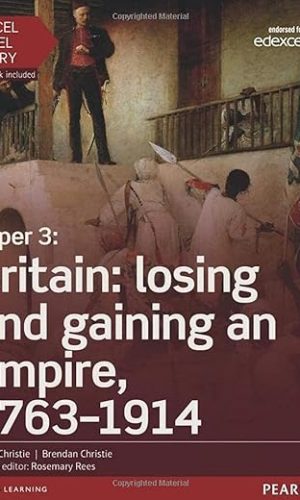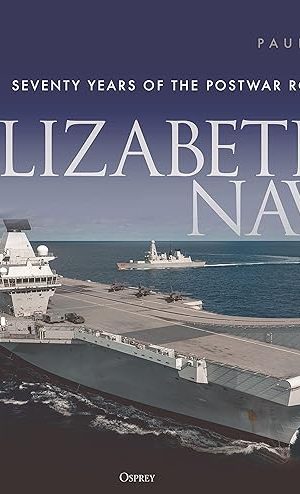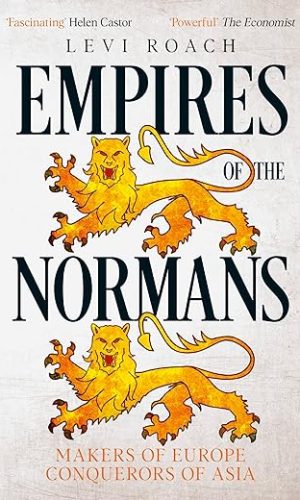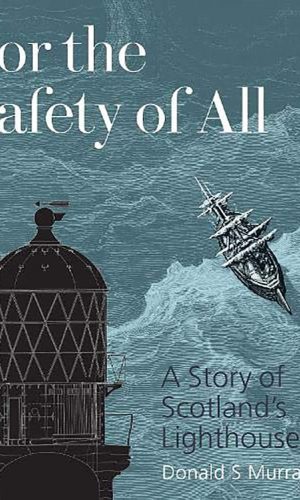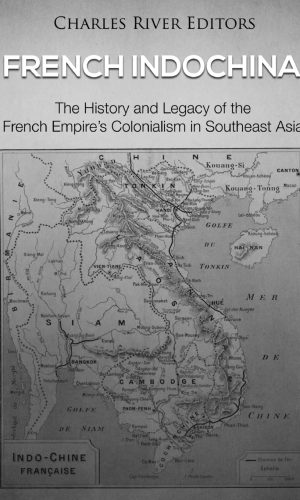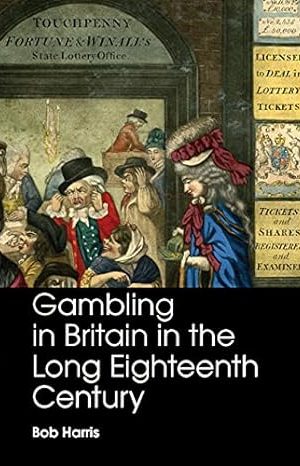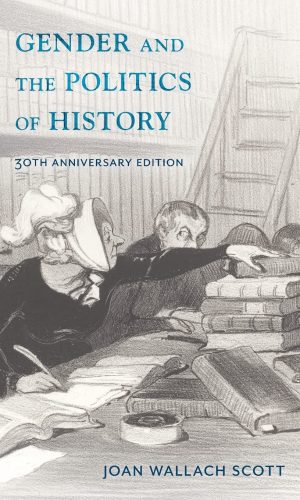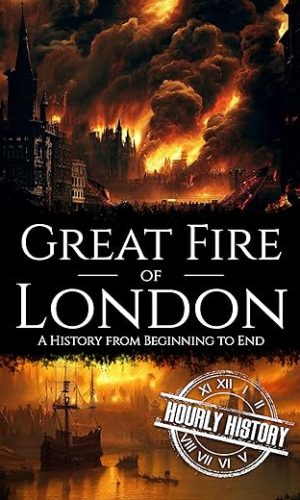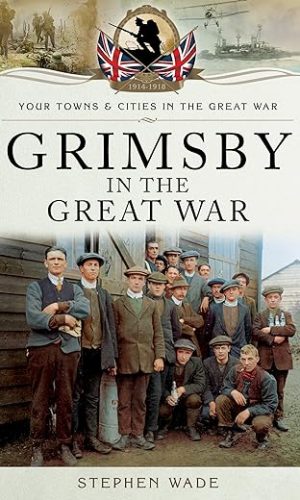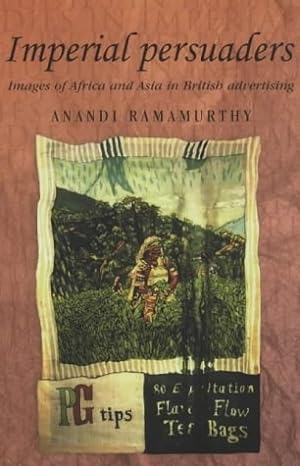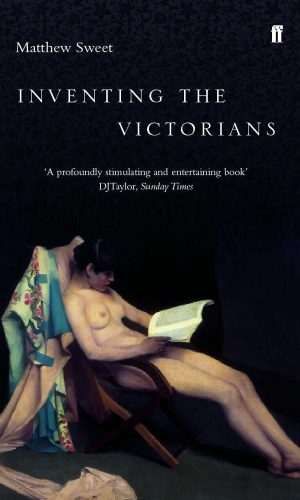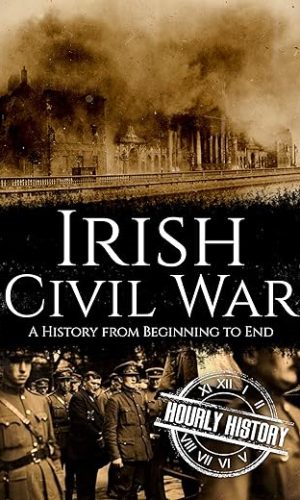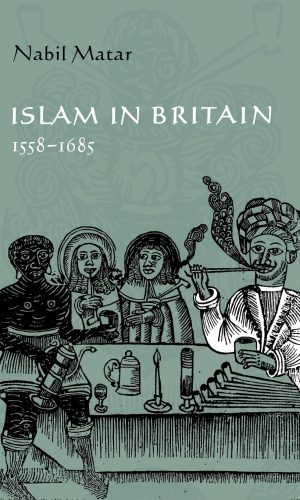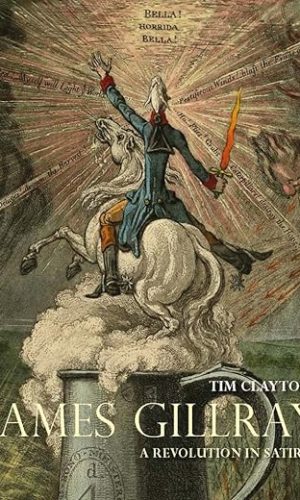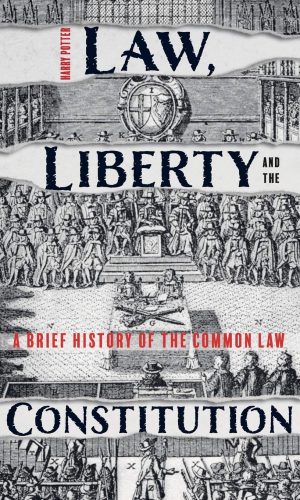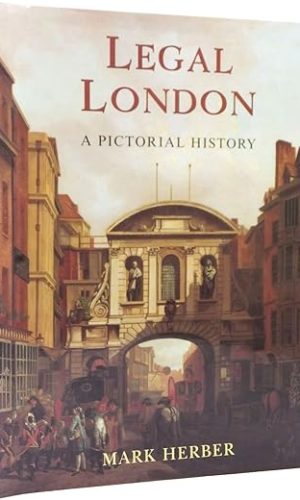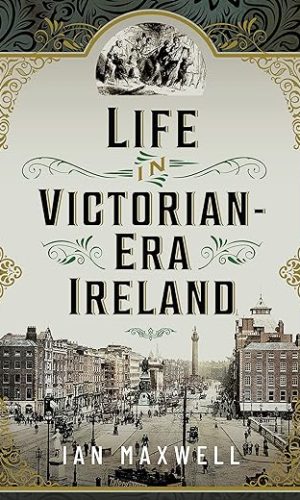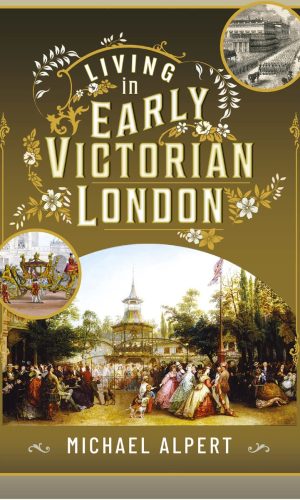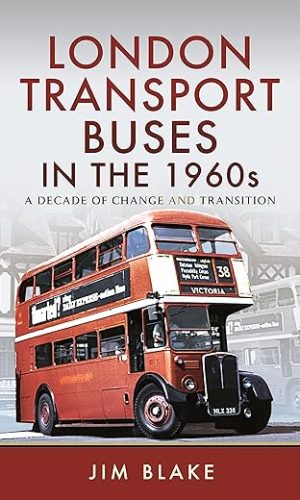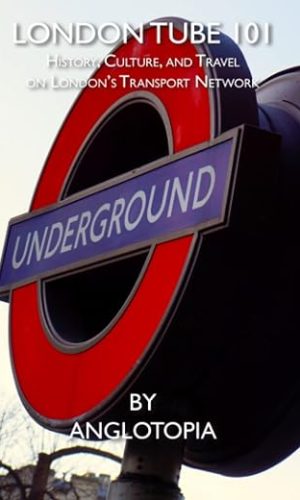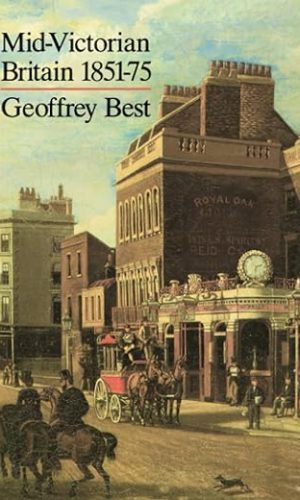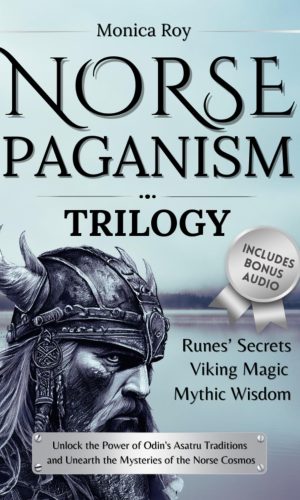Europe
-
Edexcel A Level History, Paper 3: Britain: losing and gaining an empire, 1763-1914 Student Book + ActiveBook (Edexcel GCE History 2015)
This book:
- covers the essential content in the new specifications in a rigorous and engaging way, using detailed narrative, sources, timelines, key words, helpful activities and extension material
- helps develop conceptual understanding of areas such as evidence, interpretations, causation and change, through targeted activities
- provides assessment support for A level with sample answers, sources, practice questions and guidance to help you tackle the new-style exam questions.
It also comes with three years’ access to ActiveBook, an online, digital version of your textbook to help you personalise your learning as you go through the course – perfect for revision.
Read more
£19.90£21.60 -
Elizabeth II: Princess, Queen, Icon
With just under a thousand portraits of Queen Elizabeth II, the National Portrait Gallery boasts some of the most treasured and famous official portraits of the Queen captured at key historic moments, as well as day-to-day images of the monarch at home and with family, following her journey from childhood, to princess and Queen, mother and grandmother. This publication highlights the most important portraits of Elizabeth II from the Gallery’s Collection. Paintings and photographs from the birth of Elizabeth II to the present will take readers on a visual journey through the life of Britain’s foremost icon.The book will reflect on the Queen’s life, presenting family photographs alongside important formal portraits to explore how, as her reign became record-breaking, she became an iconic figure in modern British culture and history. The publication features works by key artists depicting the Queen from 1926 to the present day, including Baron, Cecil Beaton, Dorothy Wilding, Patrick Lichfield, Andy Warhol, Annie Leibovitz and David Bailey.
This book features an introductory essay by Alexandra Shulman, exploring how the collected portraits depict the Queen throughout her life and reign, and a timeline of key historical events and moments from Elizabeth II’s life.
Read more
£11.60£14.20Elizabeth II: Princess, Queen, Icon
£11.60£14.20 -
Elizabeth’s Navy: Seventy Years of the Postwar Royal Navy
With over 260 images, this is a highly illustrated history of the ships and operations of the Royal Navy during the reign of the late Queen Elizabeth II.
During the 70 years spanned by the reign of the late Queen Elizabeth II, the Royal Navy changed out of all recognition. Its status as a superpower navy with worldwide bases and operations has been eclipsed, but it remains a powerful force because of its potency if not its size. Maritime history author Paul Brown takes us through each decade in turn, outlining the key events and developments, and charting the changes to the size, structure and capabilities of the Navy.
Fully illustrated with over 260 colour and black and white images, this book also provides a stunning visual record of the ships and operations that featured most prominently in each decade.
Read more
£34.10£42.80 -
Empires of the Normans: Makers of Europe, Conquerors of Asia
‘Powerful’ The Economist
‘Fascinating, panoramic . . . Roach brings an expert eye and page-turning energy’ Helen Castor, bestselling author of She Wolves
‘Narrated with pace, clarity, authority and style, Roach’s book is a bracing tour of the world that the Normans made their own’ Thomas Williams, bestselling author of Viking Britain
‘A fresh retelling . . . written with enthusiasm and brio’ Marc Morris, bestselling author of The Anglo-Saxons
How did descendants of Viking marauders come to dominate Europe, the Mediterranean and the Middle East?
It is a tale of ambitious adventures and fierce freebooters, of fortunes made and fortunes lost. The Normans made their influence felt across all of western Europe and the Mediterranean, from the British Isles to North Africa, and Lisbon to the Holy Land. In Empires of the Normans we discover how they combined military might and political savvy with deeply held religious beliefs and a profound sense of their own destiny. For a century and a half, they remade Europe in their own image, and yet their heritage was quickly forgotten – until now.
Read more
£4.70 -
For the Safety of All: A Story of Scotland’s Lighthouses
Lighthouses punctuate Scotland’s coastline – a stoic presence on the edge of the landscape. Since the earliest of these hardy structures were raised, they have been a lifeline for seafarers at the mercy of treacherous weather and uncertain navigation. Today over 100 of Scotland’s lighthouses are listed buildings.
The lighthouse is now one of many maritime resources which act ‘for the safety of all’. But we are still drawn to the solitary life of the keeper, the beauty of the lens of the lamp and the calm reassurance of a flashing light on a distant shore.
Donald S Murray explores Scotland’s lighthouses through history, storytelling and the voices of the lightkeepers. From ancient beacons to the work of the Stevensons and the Northern Lighthouse Board, and from wartime strife to automation and preservation, the lighthouses stand as a testament to the nation’s innate connection to the sea.
Published in partnership between Historic Environment Scotland and the Northern Lighthouse Board.
Read more
£13.10£14.20 -
French Indochina: The History and Legacy of the French Empire’s Colonialism in Southeast Asia
*Includes pictures
*Includes online resources and a bibliography for further reading
“Without Empire France today would only be a liberated country. Thanks to her Empire she is today a victorious country.” – French Guianan lawyer and politician, Gaston Monnerville
The U.S. Naval Station Argentia, located in Placentia Bay, a sheltered harbor on Newfoundland Island, was the unlikely setting for one of the most pivotal summit meetings of the 20th century. The meeting took place on August 9, 1941. World War II was in its second year, the British had won the Battle of Britain, but were still encircled by German U-Boats, and the British fleet was being decimated in the North Atlantic. In North Africa, a contest of armor was underway as Axis and Allied armies fought for control of Egypt, while Britain and her Commonwealth allies stood alone against the mighty German Wehrmacht.
Roosevelt, however, pictured a very different post-war world than his British counterpart, Winston Churchill. When he and Churchill met at what came to be known as the Atlantic Conference, Churchill’s pleas for U.S. manpower and aid were accepted, but only under clear conditions. If the United States was to come to the aid of Britain, it would be for the purpose of defeating the Germans and the Japanese and not to support the insupportable institutions of empire. Britain and, by extension, France and Portugal, the only remaining major European shareholders in foreign empire, would have to commit to decolonization as a basic prerequisite of substantial U.S. assistance.
Churchill, a vocal and forceful proponent of empire and a man of the generation that had conquered the world, did not receive this news well. On the other side of the world, British and allied European Asian colonies lay very much in the path of the Japanese imperial march into Southeast Asia. However, as the inevitability of war grew daily, the nationalist movement in India was also beginning to gather pace. Without India and Indian manpower, war with Japan would be lost before it could begin. The Indians in a sense could hold the British hostage, and ultimately, in exchange for Indian cooperation in the war, the British would first have to commit to a post-war independence process.
Meanwhile, the British were not the only European power to take note of this development. The French too were a major imperial power with a great deal to lose from such a monumental change, but their view of the global chessboard was somewhat different. France lay under German occupation, and an armistice had been signed on behalf of the French nation by Marshall Philippe Pétain, commencing the era of Vichy France. In London, meanwhile, the firebrand French General Charles de Gaulle urged a continuation of the resistance, believing the French mainland to be only a small part of the picture. France was much more than just France. De Gaulle established the Free French movement in Britain, based on the loyalty and the ongoing Free French control of a majority of her overseas territories. The Free French movement and the Free French army based themselves in Francophone Africa. The saga of the Free French movement would impact the war in both North Africa and Europe, but most specifically, it would serve to radically redefine the French view of itself and her relationship with her overseas territories. Most importantly, it would set the tone for a style of decolonization very different from the British, and perhaps not surprisingly, things would not go smoothly, especially with the geopolitics of the Cold War affecting matters.
French Indochina: The History and Legacy of the French Empire’s Colonialism in Southeast Asia analyzes the colonization of Southeast Asia and what happened as a result of the decolonization. Along with pictures of important people, places, and events, you will learn about the French in Southeast Asia like never before.Read more
£8.00 -
Gambling in Britain in the Long Eighteenth Century
English society in the eighteenth century was allegedly marked by a ‘gambling mania’, such was the prevalence and intensity of different forms of ‘gaming’. Gambling in Britain in the Long Eighteenth Century subjects this notion to systematic scrutiny, exploring the growth and prevalence of different forms of gambling across Britain and throughout British society in this period, as well as attitudes towards it. Drawing on a vast range of new, empirical evidence, Bob Harris seeks to understand gambling, its growth, and significance within the context of wider trends and impulses in society. This book asks what light gambling practices and habits shed back onto society and the values, hopes, and expectations that informed the lives of those involved. This is a book, therefore, as much about the character of British society in the long eighteenth century as it is about gambling itself.Read more
£67.70 -
Gender and the Politics of History (Gender and Culture Series)
This landmark work from a renowned feminist historian is a foundational demonstration of the uses of gender as a conceptual tool for cultural and historical analysis. Joan Wallach Scott offers a trenchant critique of the compartmentalization of women’s history, arguing that political and social categories are always fundamentally shaped by gender and that questions of gender are essential to considerations of difference in history. Exploring topics ranging from language and class to the politics of work and family, Gender and the Politics of History is a vital contribution to feminist history and historical methodology that also speaks more broadly to the ongoing redefinition of gender in our political and cultural vocabularies.This anniversary edition of a classic text in feminist theory and history shows the evergreen relevance of Scott’s work to the humanities and social sciences. In a new preface, Scott reflects on the book’s legacy and implications for contemporary politics as well as what she has reconsidered as a result of her engagement with psychoanalytic theory. The book also includes a previously unpublished essay, “The Conundrum of Equality,” which takes up the question of affirmative action.
Read more
£22.40£23.80 -
Glam Italia! 101 Fabulous Things to Do in Rome: Beyond the Colosseum, the Vatican, the Trevi Fountain, and the Spanish Steps: 2 (Glam Italia! How To Travel Italy)
Tired of long lines and lame tours? Discover a superior Roman vacation with fewer crowds and way more culture.Does the idea of a tedious sightseeing tour make you want to stay in the hotel? Would you choose hunting down undiscovered gems over sweaty buses any day? After three decades traveling to the Eternal City, private tour guide Corinna Cooke knows how to make travel experiences fresh and unique. Now she’ll show you how to avoid the lines and embrace the authentic Roman vacation.
Glam Italia! 101 Fabulous Things to Do in Rome is your perfect guide for avoiding clichéd tours and discovering fascinating attractions within walking distance of the city’s historic center. Packed with entertaining stories and historical facts, Cooke uses her expert knowledge to make your trip truly come to life. With tons of entries on little-known locations and suggestions of how to get the most out of each, this is the book youneed to get an Italian experience you’ll never forget.
In Glam Italia! 101 Fabulous Things to Do in Rome, you’ll discover:
- Where to take the best Instagram photos that your friends and family will love
- How to avoid overwhelming crowds and replace them with uncharted sights and sounds
- The best markets for food, souvenirs, art, and fashion to help you shop like a local
- How to find the city beneath the city for a truly unique Italian adventure
- Hilarious and fascinating ghost stories, histories, travelogues, and much, much more!
Glam Italia! 101 Fabulous Things to Do in Rome is your essential tour book for a trip you’ll treasure forever. If you like vacations as unique as you are, then you’ll love Corinna Cooke’s breezy and engaging guide to Italy’s historic capital.
Buy Glam Italia! to experience the real Rome today!
Read more
£14.80 -
Great Fire of London: A History from Beginning to End
Discover the devastating history of the Great Fire of London…
Free BONUS Inside!In the summer of 1666, London was one of the largest cities in Europe, with close to half a million people living in its narrow, congested streets. Many of these people lived in houses packed closely together, lacking even basic facilities such as clean water and sewage disposal. The previous year, these unsanitary conditions had contributed to the worst outbreak of plague since the Black Death in 1348. Around 15% of the city’s population died as the deadly disease spread unchecked for almost twelve months. Finally, by the summer of 1666, the threat of plague seemed to be receding, and London slowly began to return to normal. But then, the city was threatened by another deadly hazard: fire.
London was a tinderbox waiting to ignite. Many of the city’s wooden buildings were sealed with flammable pitch, their upper stories jutting out and nearly meeting across the streets. An unusually hot and dry summer had drained the city’s water supplies, and without an organized firefighting force, its citizens were left to fend for themselves. The stage was set for catastrophe, and in the early hours of Sunday, September 2, 1666, the spark was struck. A seemingly inconsequential fire ignited in a baker’s shop on Pudding Lane. Unchecked and underestimated, it would grow to become one of the most devastating disasters London had ever faced.
Discover a plethora of topics such as
- London: A City at Risk
- September 2: Pudding Lane
- September 3: The Fire Spreads
- September 4: A Change of Wind
- September 5 & 6: The Fire Dies Down
- Rebuilding
- And much more!
So if you want a concise and informative book on the Great Fire of London, simply scroll up and click the “Buy now” button for instant access!
Read more
£1.90 -
Great Hatred: The Assassination of Field Marshal Sir Henry Wilson MP
THE IRISH TOP 10 BESTSELLER
A gripping investigation into one of Irish history’s greatest mysteries, Great Hatred reveals the true story behind one of the most significant political assassinations to ever have been committed on British soil.
‘Heart-stopping . . . The book is both forensic and a page-turner, and ultimately deeply tragic, for Ireland as much as for the murder victim.’
MICHAEL PORTILLO‘Gripping from start to finish. McGreevy turns a forensic mind to a political assassination that changed the course of history, uncovering a trove of unseen evidence in the process.’
ANITA ANAND, author of The Patient Assassin‘Invaluable.’ IRISH TIMES
‘Intelligent and insightful.’ IRISH INDEPENDENT
On 22 June 1922, Sir Henry Wilson – the former head of the British army and one of those credited with winning the First World War – was shot and killed by two veterans of that war turned IRA members in what was the most significant political murder to have taken place on British soil for more than a century. His assassins were well-educated and pious men. One had lost a leg during the Battle of Passchendaele. Shocking British society to the core, the shooting caused consternation in the government and almost restarted the conflict between Britain and Ireland that had ended with the Anglo-Irish Treaty just five months earlier. Wilson’s assassination triggered the Irish Civil War, which cast the darkest of shadows over the new Irish State.
Who ordered the killing? Why did two English-born Irish nationalists kill an Irish-born British imperialist? What was Wilson’s role in the Northern Ireland government and the violence which matched the intensity of the Troubles fifty years later? Why would Michael Collins, who risked his life to sign a peace treaty with Great Britain, want one of its most famous soldiers dead, and how did the Wilson assassination lead to Collins’ tragic death in an ambush two months later?
Drawing upon newly released archival material and never-before-seen documentation, Great Hatred is a revelatory work that sheds light on a moment that changed the course of Irish and British history for ever.
‘McGreevy provides more than the anatomy of a political murder; in reconstructing this era of blood, poverty and wartime trauma, he also gives full expression to the terrible forces that WB Yeats once called the “fanatic heart” and the “great hatred”.’
THE TIMES‘Thoughtful and well-researched . . . an important and valuable addition to the library of the Irish Revolution.’
PROFESSOR DIARMAID FERRITER, University College DublinRead more
£7.30£10.40 -
Great Western Pannier Tank Classes: An Overview of Their Design & Development (Locomotive Portfolios)
This comprehensive and fully illustrated history presents an in-depth look at the Great Western Railway’s various pannier tank engines.
Though hauling freight was a vital part of Great Western Railway’s history—and where it made the majority of its profit—there are few books devoted to the stout, powerful engines that did the work. In Great Western, Pannier Tank Classes, British Railways expert David Maidment corrects that oversight. This volume explores the large number of 0-6-0 saddle tanks built for both the Great Western Railway and the independent railway companies in South Wales, most of which were converted to pannier tanks in the Churchward and Collett eras.
While covering the Armstrong and Dean engines in detail, Maidment goes on to describe the design, construction and operation of the largest class of steam engines built in the UK in the last century: Charles Collett’s GWR 5700 class, examples of which were still being built after nationalization. Collett also designed pannier tank engines for branch passenger and freight work, and his successor Frederick Hawksworth continued the GW tradition with a tapered boiler version. All of these are discussed in depth in terms of their design and service. A concluding chapter covers further designs that were never built.Read more
£8.50 -
Grimsby in the Great War (Your Towns and Cities in the Great War)
An account of the Home Front experience in Grimsby.Read more
£7.20£9.50 -
Helicopters and North Sea Oil: A Story of Service, Danger and Survival
A series of personal accounts by highly trained helicopter pilots, including those with distinguished careers in the military and commercial flying, who with divers, ensured that essential staff could operate in North Sea oil exploration and oil supply. They were the vital link in the process and operated in the most challenging circumstances, often in high levels of danger and sometimes with loss of life, for example, the Piper Alpha Disaster which made national news. And the ferrying of essential personnel and supplies could involve rescues as well routine flying missions. The narrative is often technical but written to ensure good understanding for lay readers and it will, of course, appeal to the many with flying experience in the forces, in commercial flying and government service. Above all, it is a series of graphic personal stories as recounted by individuals faced with extremes of climate, weather, technical, engineering and aeronautical problems and often with human life at stake. The people come to life and with domestic and social concerns and interests are ‘real’ and believable people. It is history of the North Sea oil episode in UK political and economic history and in conjunction with international oil politics is of huge importance to Britain’s economy. This is a period of progress to domestic oil independence by about 1984 and so a key period with subsequent importance even to the present. All aspects of the operations are covered within individual stories, and include the broader questions of company policy, regulation, and trade union involvement.Read more
£20.00£23.80 -
Imperial Persuaders: Images of Africa and Asia in British Advertising (Studies in Imperialism)
The first book to provide an historical survey of images of black people in advertising during the colonial period. Analyses the various conflicting, and changing ideologies of colonialism and racism in British advertising. Reveals the historical and production context of many well known advertising icons, as well as the specific commercial interests that various companies’ images projected. Provides a chronological understanding of changing colonial ideologies in relation to advertising, while each chapter explores images produced to sell specific products, such as soap, cocoa, tea and tobacco. — .Read more
£48.00 -
In Little Need of Divine Intervention: Takezaki Suenaga’s Scrolls of the Mongol Invasions of Japan: 113 (Cornell East Asia)
In Little Need of Divine Intervention presents a fundamental revision of the thirteenth-century Mongol Invasions of Japan by revealing that the warriors of medieval Japan were capable of fighting the Mongols to a standstill without the aid of any “divine winds” or kamikaze. Conlan’s interpretation of the invasions is supplemented with translations of the picture scrolls commissioned by Takezaki Suenaga, a warrior who fought against the Mongols. In addition, translations of nearly seventy administrative documents are provided, thereby enabling students of Japanese history reconstruct the invasions using contemporary sources. A rare copy of Takezaki Suenaga’s Scrolls, reproduced in full, reveals hitherto unknown missing scenes. Furthermore, the scrolls’ images can be now read in tandem with its narrative passages, translated in English for the first time. Please note that the entire book was intentionally printed from back to front, so that the reproduced scrolls unfold in Japanese order, from right to left. Thus the book’s spine is on the right. This monograph will prove to be of great interest for students and scholars of medieval Japanese history, warrior culture, and the nature of Japan in an East Asian context.
Read more
£23.70 -
Introduction to English Legal History
Fully revised and updated, this classic text provides the authoritative introduction to the history of the English common law. The book traces the development of the principal features of English legal institutions and doctrines from Anglo-Saxon times to the present and, combined with Baker and Milsom’s Sources of Legal History, offers invaluable insights into the development of the common law of persons, obligations, and property, and also of criminal and public law. It is an essential reference point for all lawyers, historians and students seeking to understand the evolution of English law over a millennium.The book provides an introduction to the main characteristics, institutions, and doctrines of English law over the longer term – particularly the evolution of the common law before the extensive statutory changes and regulatory regimes of the last two centuries. It explores how legal change was brought about in the common law and how judges and lawyers managed to square evolution with respect for inherited wisdom.
Read more
£42.70 -
Inventing the Victorians
Suppose that everything we think we know about ‘The Victorians’ is wrong? That we have persistently misrepresented the culture of the Victorian era, perhaps to make ourselves feel more satisfyingly liberal and sophisticated? What if they were much more fun than we ever suspected? Matthew Sweet’s Inventing the Victorians has some revelatory – and entertaining – answers for us.
As Sweet shows us in this brilliant study, many of the concepts that strike us as terrifically new – political spin-doctoring, extravagant publicity stunts, hardcore pornography, anxieties about the impact of popular culture upon children – are Victorian inventions. Most of the pleasures that we imagine to be our own, the Victorians enjoyed first: the theme park, the shopping mall, the movies, the amusement arcade, the crime novel and the sensational newspaper report. They were engaged in a well-nigh continuous search for bigger and better thrills. If Queen Victoria wasn’t amused, then she was in a very small minority . . .
Matthew Sweet’s book is an attempt to re-imagine the Victorians; to suggest new ways of looking at received ideas about their culture; to distinguish myth from reality; to generate the possibility of a new relationship between the lives of nineteenth-century people and our own.
Read more
£8.30£10.40Inventing the Victorians
£8.30£10.40 -
Irish Civil War: A History from Beginning to End (History of Ireland)
Discover the remarkable history of the Irish Civil War…
Free BONUS Inside!
The Irish War of Independence which ended in July 1921 led directly to the agreement of the Anglo-Irish Treaty, an agreement that provided Ireland with a measure of independence. The Irish Free State was created, and Ireland was granted a level of autonomy it had not enjoyed for more than one hundred years.
However, the treaty contained a clause which was to divide Ireland, literally and politically. The six counties in the north which formed Ulster were allowed to opt-out and to remain a part of the United Kingdom. The island of Ireland became two separate countries for the first time—The Irish Free State in the south and west and Northern Ireland in the north. This division caused bitterness among many Irish people who had fought for independence. Some even viewed the signing of the treaty and the creation of a separate Northern Ireland as a betrayal of all they had fought for. Others accepted that the treaty was not perfect but saw the creation of the Free State as an important first step on the road to complete independence for Ireland.
In late June 1922, growing animosity between Pro and Anti-Treaty factions erupted into armed conflict in the center of Dublin. For the next ten months, the Irish Free State was wracked by a bitter, bloody, and brutal civil war between those who sought to protect the new government and those who wished to destroy it. This is the story of the Irish Civil War, its origins, and its consequences.
Discover a plethora of topics such as
- The War of Independence and the Anglo-Irish Treaty
- The Attack on the Four Courts
- Civil War Breaks Out
- The Deaths of Arthur Griffith and Michael Collins
- Executions and Assassinations
- The End of the Civil War
- And much more!
So if you want a concise and informative book on the Irish Civil War, simply scroll up and click the “Buy now” button for instant access!
Read more
£1.90 -
Islam in Britain, 1558-1685
This book examines the impact of Islam on Britain between 1558 and 1685. Professor Matar provides a perspective on the transformation of British thought and society by demonstrating how influential Islam was in the formation of early modern British culture. Christian-Muslim interaction was not, as is often thought, primarily adversarial; rather, there was extensive cultural, intellectual and missionary engagement with Islam in Britain. The author documents conversion both to and from Islam, and surveys reactions to these conversions. He examines the impact of the Qur’an and Sufism, not to mention coffee, on British culture, and cites extensive interaction of Britons with Islam through travel, in London coffee houses, in church, among converts to and from Islam, in sermons and in plays. Finally, he focuses on the theological portrait of Muslims in conversionist and eschatological writings.Read more
£36.10Islam in Britain, 1558-1685
£36.10 -
James Gillray: A Revolution in Satire
A lavishly illustrated biography of James Gillray, inventor of the art of political caricature
James Gillray (1756–1815) was late Georgian Britain’s funniest, most inventive, and most celebrated graphic satirist and continues to influence cartoonists today. His exceptional drawing, matched by his flair for clever dialogue and amusing titles, won him unprecedented fame; his sophisticated designs often parodied artists such as William Hogarth, Joshua Reynolds, and Henry Fuseli, while he borrowed and wittily redeployed celebrated passages from William Shakespeare and John Milton to send up politicians in an age―as now―where society was fast changing, anxieties abounded, truth was sometimes scarce, and public opinion mattered.
Tim Clayton’s definitive biography explores Gillray’s life and work through his friends, publishers―the most important being women―and collaborators, aiming to identify those involved in inventing satirical prints and the people who bought them. Clayton thoughtfully explores the tensions between artistic independence, financial necessity, and the conflicting demands of patrons and self-appointed censors in a time of political and social turmoil.
Distributed for the Paul Mellon Centre for Studies in British ArtRead more
£34.80£47.50James Gillray: A Revolution in Satire
£34.80£47.50 -
Kings Queens Bones & Bastards: Who’s Who in the English Monarchy from Egbert to Elizabeth II
Who invented the ‘House of Windsor’ as a royal name? Who founded Westminster Abbey? Which king had twenty-one illegitimate children? This book describes the most memorable features of the life and times of each king or queen – from Egbert, crowned in 802 and considered the first king of England, to Queen Elizabeth II.Read more
£11.70£14.20 -
Law, Liberty and the Constitution: A Brief History of the Common Law
A new approach to the telling of legal history, devoid of jargon and replete with good stories, which will be of interest to anyone wishing to know more about the common law – the spinal cord of the English body politic. Throughout English history the rule of law and the preservation of liberty have been inseparable, and both are intrinsic to England’s constitution. This accessible and entertaining history traces the growth of the law from its beginnings in Anglo-Saxon times to the present day. It shows how the law evolved from a means of ensuring order and limiting feuds to become a supremely sophisticated dispenser of justice and the primary guardian of civil liberties.This development owed much to the English kings and their judiciary, who, in the twelfth century, forged a unified system of law – predating that of any other European country – from almost wholly Anglo-Saxon elements. Yet by theseventeenth century this royal offspring – Oedipus Lex it could be called – was capable of regicide. Since then the law has had a somewhat fractious relationship with that institution upon which the regal mantle of supreme power descended, Parliament. This book tells the story of the common law not merely by describing major developments but by concentrating on prominent personalities and decisive cases relating to the constitution, criminal jurisprudence, and civil liberties. It investigates the great constitutional conflicts, the rise of advocacy, and curious and important cases relating to slavery, insanity, obscenity, cannibalism, the death penalty, and miscarriages of justice. The book concludes by examining the extension of the law into the prosecution of war criminals and protection of universal human rights and the threats posed by over-reaction to national emergencies and terrorism. Devoid ofjargon and replete with good stories, Law, Liberty and the Constitution represents a new approach to the telling of legal history and will be of interest to anyone wishing to know more about the common law – the spinal cordof the English body politic. Harry Potter is a former fellow of Selwyn College, Cambridge and a practising barrister specialising in criminal defence. He has authored books on the death penalty and Scottish history andwrote and presented an award-winning series on the history of the common law for the BBC.Read more
£15.90£19.00 -
Legal London: A Pictorial History
London has been home to more lawyers, for more centuries, than any other city on earth. Paris ran it neck-and-neck until the 18th century, after which London romped away as the national and then imperial capital of a legal system with centralized Royal Courts of Justice, Inns of Court, Courts of Appeal, debtors prisons, the Old Bailey, the Archbishop’s Court at St Mary le Bow, the Bridewell, the notorious Fleet Prison, and the Metropolitan Police. No other city so celebrates, in surviving buildings and institutions, the work of judges, lawyers, litigants, criminals, and the police! This new book does justice to them all. Covering both civil and criminal aspects of the law, the author’s narrative account is enormously expanded by 200 photographs and engravings, each fully captioned; plus maps to show the location of the courts, Inns, prisons, and other places of punishment throughout the metropolis. This fascinating study of the law at work in days gone by is both entertaining and informative. Though of particular value to everyone interested in London history, it will appeal to members of the legal and law enforcement professions everywhere that the “English” system and tradition has left its mark.Read more
£3.20 -
Life in Victorian Era Ireland
There are many books which tackle the political developments in Ireland during the nineteenth century. The aim of this book is to show what life was like during the reign of Queen Victoria for those who lived in the towns and countryside during a period of momentous change. It covers a period of sixty-four years (1837-1901) when the only thing that that connected its divergent decades and generations was the fact that the same head of state presided over them. It is a social history, in so far as politics can be divorced from everyday life in Ireland, examining, changes in law and order, government intervention in education and public health, the revolution in transport and the shattering impact of the Great Famine and subsequent eviction and emigration. The influence of religion was a constant factor during the period with the three major denominations, Roman Catholic, Anglican and Presbyterian, between them accounting for all but a very small proportion of the Irish population. Schools, hospitals, and other charitable institutions, orphan societies, voluntary organisation, hotels, and even public transport and sporting organisations were organised along denominational lines. On a lighter note, popular entertainment, superstitions, and marriage customs are explored through the eyes of the Victorians themselves during the last full century of British rule.Read more
£17.30£19.00Life in Victorian Era Ireland
£17.30£19.00 -
Living in Early Victorian London
London in the 1840s was sprawling and smoke-filled, a city of extreme wealth and abject poverty. Some streets were elegant with brilliantly gas-lit shop windows full of expensive items, while others were narrow, fetid, muddy, and in many cases foul with refuse and human filth. Railways, stations and sidings were devouring whole districts and creating acres of slums or ‘rookeries’ into which the poor of the city were jammed and where crime, disease and prostitution were rife.The most sensational crime of the epoch, the murder of Patrick O’Connor by Frederick and Maria Manning, filled the press in the summer and autumn of 1849. Michael Alpert uses the trial record of this murder, accompanied by numerous other contemporary sources, among them journalism, diaries and fiction, to show how day-to-day lives, birth, death, sickness, work, shopping, cooking, and buying clothes, were lived in the crowded, noisy capital in the early decades of Victoria’s reign. These sources illustrate how ordinary people lived in London, their incomes, entertainments, religious practice, reading and education, their hopes and anxieties. Life in Early Victorian London reveals how ordinary people like the Mannings and thousands of others experienced their multifaceted lives in the greatest capital city of the world.
Early Victorian London lived on the cusp of great improvements, but it was a city which in some aspects was mediaeval. Its inhabitants enjoyed the benefit of the Penny Post and the omnibus, and they were protected to some extent by a police force. The Mannings fled their crime on the railway, were trapped by the recently-invented telegraph and arrested by ‘detectives’ (a new concept and word), but they were hanged in public as murderers had been for centuries, watched by a baying, drunken and swearing mob.
Read more
£8.50 -
London Transport Buses in the 1960s: A Decade of Change and Transition
Just as life in Britain generally changed dramatically during the 1960s, so did London Transport’s buses and their operations. Most striking was the abandonment of London’s trolleybuses, once the world’s biggest system, and their replacement by motorbuses. Begun in 1959 using surplus RT-types, it was completed by May 1962 using new Routemasters, designed specifically to replace them. They then continued to replace RT types, too. Traffic congestion and staff shortages played havoc with London Transport’s buses and Green Line coaches during the 1960s, one-man operation was seen as a remedy for the latter, shortening routes in the Central Area for the former. Thus the ill-fated “Reshaping Plan” was born, introducing new O.M.O. bus types. These entered trial service in 1965, and after much delay the plan was implemented from September 1968 onwards. Sadly, new MB-types, also introduced in the Country Area, soon proved a disaster! Unfortunately, owing to a government diktat, Routemaster production ended at the start of 1968, forcing LT to buy “off-the-peg” vehicles unsuited to London operation and their in-house overhaul procedures. The decade ended with the loss of LT’s Country Area buses and Green Line coaches to the National Bus Company. Photographer Jim Blake began photographing London’s buses towards the end of the trolleybus conversion programme in 1961 and continued dealing with the changing scene throughout the decade. He dealt very thoroughly with the “Reshaping” changes, and many of the photographs featured herein show rare and unusual scenes which have never been published before.Read more
£20.00£23.80 -
London Tube 101: History, Culture, and Travel on London’s Transport Network
We are thrilled to announce Anglotopia’s newest book: London Tube 101- History, Culture, and Travel on London’s Transport Network. This new publication is your complete guidebook to London’s iconic transport network’s history, culture, and guide to using the famous London Tube network. The book will be released in September and we need to start pre-orders now.
We do a deep dive into the London Tube’s fascinating history, covering the history of the tube network, fascinating stories, London’s abandoned and hidden Tube stations and so much more. This comprehensive book covers everything from the first Metropolitan Railway to the newly opened Elizabeth Line. In addition to all of this, we’ll provide useful and practical information using the network on your travels. It’s a combination of a history book, guidebook, and culture book.
Following a similar format to our previous books, such as 101 Budget Britain Travel Tips and 101 London Travel Tips it is a pleasure to read. Tube enthusiasts will adore this 300-page book, sure to learn something new about the most famous rail network in the world. From the history of every tube line, including facts about each tube line, to long-reads on the history of specific Tube-related topics, this comprehensive guide is a must-have for the Tube enthusiast.
Read more
£19.00 -
Lost Cars of the 1940s and ’50s
Sixty diverse cars, sixty fascinating stories, sixty contrasting specifications, just one uniting factor: they’re all forgotten, neglected or misunderstood classics.
Motoring in the 1940s and ’50s spanned from post-war austerity to the you’ve-never-had-it-so-good era. It was a time when engines gained more power, suspension became more cosseting, the chassis frame was rendered a thing of the past, and styling followed jet fighters and later space rockets. Many cars found success across the world, but others barely got off the ground and quickly vanished from our collective consciousness.
In Lost Cars of the 1940s and ’50s, award-winning author Giles Chapman presents an all-new selection of the intriguing strays of the car world. Rarely seen archive and contemporary images bring daring new designs, economy models and some extraordinary luxury cars back to life … even if they misfire once again in the process.
Read more
£17.40£19.00Lost Cars of the 1940s and ’50s
£17.40£19.00 -
Medical Services in the First World War (Shire Library)
The number of wounded in the First World War was unprecedented, and inadequate military planning presented the medical and voluntary community with huge and daunting challenges. Yet in the face of tremendous adversity both tackled their work with resourcefulness, courage and great humanity. This book is the illustrated story of those who risked their lives collecting casualties from the front line, of the various transport and treatment facilities at their disposal and of the eclectic mix of buildings in which the wounded were cared for at home, including many famous country houses. The vital part played by nurses, both in terms of essential medical duties and in boosting morale among the patients, is also examined, rounding off this perfect introduction to medical care in the First World War.Read more
£7.60£8.50 -
Medieval Pets
An engaging and informative survey of medieval pet keeping which also examines their representation in art and literature. Animals in the Middle Ages have often been discussed – but usually only as a source of food, as beasts of burden, or as aids for hunters. This book takes a completely different angle, showing that they were also beloved domestic companions to their human owners, whether they were dogs, cats, monkeys, squirrels, and parrots. It offers a full survey of pets and pet-keeping: from how they were acquired, kept, fed, exercised, and displayed, to the problems they could cause. It also examines the representation of pets and their owners in art and literature; the many charming illustrations offer further evidence for the bonds between humans and their pets, then as now. A wide range of sources, including chronicles, letters, sermons and poems, are used in what is both an authoritative and entertaining account.Read more
£14.30£19.00Medieval Pets
£14.30£19.00 -
MID-VICTORIAN BRITAIN 1851-75
One of the most approachable and useful books on the period.Read more
£14.20 -
Moseley 1850-1900: Space, place and people in a middle-class Birmingham suburb
_______
During the second half of the nineteenth century, Moseley, a small hamlet just south of Birmingham, developed into a flourishing middle-class suburb. Drawing on a wealth of primary sources, Janet Berry’s ambitious research asks why and how this particular suburb grew and who was instrumental in its development. What influenced the types of houses that were built and the styles of their gardens? How did residents experience life in the new suburb? How did they create a community?
In analysing an extraordinary quantity of records, Dr Berry builds a notably nuanced portrait of a place and its people that goes beyond stereotypical images of the Victorians. The suburb was a physical, social, cultural, and psychological space where people conveyed messages about their identity; relationships, lived experiences, and responses to change are all revealed.
The economics of buying or renting accommodation in Moseley are addressed, showing what was involved in setting up a single-family home, the key marker of belonging to the middle class. Aspects of this, such as how the interiors of homes were demarcated, decorated and furnished, have not previously been considered in the context of suburban studies to any extent. Additionally, this book has a particular focus on the suburban middle-class woman, her achievements and opportunities, roles and responsibilities, both inside and outside the home.
By the first decades of the twentieth century Moseley had become part of the metropolis of Birmingham. This engaging account of the process from village to fully integrated suburb will be of particular interest to urban historians.
Read more
£15.10£16.10 -
Mosquito: The RAF’s Legendary Wooden Wonder and its Most Extraordinary Mission
‘White writes narrative history like a novelist’ Navy News
‘A story of skill, courage and imagination’ The Spectator
‘Rowland White has crafted yet another brilliant account of aerial warfare’ John Nicol
_________________________________Built of lightweight wood, powered by two growling Rolls-Royce Merlin engines, impossibly aerodynamic, headspinningly fast and armed to the teeth, the de Havilland Mosquito was the war-winning wonder that should never have existed: the aircraft the RAF didn’t think it wanted then couldn’t do without.
Flying on operations barely eighteen months after a single prototype was ordered off the drawing board, it was the answer to its pilots’ prayers: a stunningly versatile warplane capable of leaving the Luftwaffe in its wake to attack when and where the enemy was least expecting it.
Excelling as a spyplane, night-fighter and pathfinder for Bomber Command’s heavies the Mossie’s reputation was cemented by a series of daredevil bombing raids across occupied Europe, including on Berlin itself, where only surprise, speed and precision could ensure success.
So when Churchill’s top secret Special Operations Executive needed to destroy the Gestapo HQ in the centre of downtown Copenhagen to prevent a devastating Nazi last stand that might prolong the war for many months, there was only one machine for the job – the Mosquito.
This is the story of that legendary aircraft told through that one impossible mission.
Like Rowland White’s previous books, Mosquito is an unputdownable mix of utterly compelling storytelling, incredible human stories and fascinating technological detail, which sheds never-before-told light on a pivotal mission that helped bring the war to its bloody and brutal close.
Read more
£8.99 -
Mosquito: The RAF’s Legendary Wooden Wonder and its Most Extraordinary Mission
‘No dry history, Mosquito reads like a thriller… this outstanding book is hard to put down… Unreservedly recommended’ Aviation Historian
‘White immerses the reader in the action from the first page. A must read choice for total aviation people everywhere’ Flight International
‘A captivating history… Rowland White uses the history of these operations to weave stories of courage and fortitude into the story of a great machine’ Daily Telegraph
_________________________________Built of lightweight wood, powered by two growling Rolls-Royce Merlin engines, impossibly aerodynamic, headspinningly fast and armed to the teeth, the de Havilland Mosquito was the war-winning wonder that should never have existed: the aircraft the RAF didn’t think it wanted then couldn’t do without.
Flying on operations barely eighteen months after a single prototype was ordered off the drawing board, it was the answer to its pilots’ prayers: a stunningly versatile warplane capable of leaving the Luftwaffe in its wake to attack when and where the enemy was least expecting it.
Excelling as a spyplane, night-fighter and pathfinder for Bomber Command’s heavies the Mossie’s reputation was cemented by a series of daredevil bombing raids across occupied Europe, including on Berlin itself, where only surprise, speed and precision could ensure success.
So when Churchill’s top secret Special Operations Executive needed to destroy the Gestapo HQ in the centre of downtown Copenhagen to prevent a devastating Nazi last stand that might prolong the war for many months, there was only one machine for the job – the Mosquito.
This is the story of that legendary aircraft told through that one impossible mission.
Like Rowland White’s previous books, Mosquito is an unputdownable mix of utterly compelling storytelling, incredible human stories and fascinating technological detail, which sheds never-before-told light on a pivotal mission that helped bring the war to its bloody and brutal close.
_________________________________Praise for Mosquito
‘Wonderful detail, intricate research and most importantly, powerful & moving human testimony, ensure the reader is gripped from the first page to the last by this incredible story’ John Nichol
‘Stunning… This is history as it should be written: adrenaline-charged, exciting, impeccably and painstakingly researched with a cast of vividly-drawn characters. Riding through it is among the greatest, most extraordinarily brilliant aircraft of them all: the Mosquito. One of the most gripping works of history I’ve ever read’ James Holland
‘Weaving together the story of its evolution with vivid accounts of the crews that flew it and the Special Operations Executive on the ground, Mosquito is both a tribute to the finest aircraft Britain produced during the war and a page-turning thriller about its use as the world’s first precision aerial weapon’ Tom Petch, author of Speed Aggression Surprise: The Secret Origins of the SAS
Read more
£9.50£19.00 -
Most Secret War (Penguin World War II Collection)
Reginald Jones was nothing less than a genius. And his appointment to the Intelligence Section of Britain’s Air Ministry in 1939 led to some of the most astonishing scientific and technological breakthroughs of the Second World War.
In Most Secret War he details how Britain stealthily stole the war from under the Germans’ noses by outsmarting their intelligence at every turn. He tells of the ‘battle of the beams’; detecting and defeating flying bombs; using chaff to confuse radar; and many other ingenious ideas and devices.
Jones was the man with the plan to save Britain and his story makes for riveting reading.Read more
£11.40£14.20Most Secret War (Penguin World War II Collection)
£11.40£14.20 -
My Revision Notes: OCR AS/A-level History: The Cold War in Europe 1941–1995
Exam board: OCR
Level: A-level
Subject: History
First teaching: September 2015
First exams: Summer 2016Target success in OCR AS/A-level History with this proven formula for effective, structured revision; key content coverage is combined with exam preparation activities and exam-style questions to create a revision guide that students can rely on to review, strengthen and test their knowledge.
– Enables students to plan and manage a successful revision programme using the topic-by-topic planner
– Consolidates knowledge with clear and focused content coverage, organised into easy-to-revise chunks
– Encourages active revision by closely combining historical content with related activities
– Helps students build, practise and enhance their exam skills as they progress through activities set at three different levels
– Improves exam technique through exam-style questions with sample answers and commentary from expert authors and teachers
– Boosts historical knowledge with a useful glossary and timeline
Read more
£9.50 -
Napoleon’s Wars: An International History, 1803-1815
No other soldier has provoked as much anger or as much fervour as Napoleon Bonaparte. Was he a monster, driven on by an endless, ruinous quest for military adventure – or was he a social and political visionary, brought down by petty reactionaries clinging to their privileges?
Charles Esdaile’s major new work reframes our understanding of Napoleon. Napoleon’s Wars looks beyond the insatiable greed for glory to create a new, genuinely international context for Napoleon’s career. The battles themselves Esdaile sees as almost side-effects, the consequences of rulers being willing to take the immense risks of fighting or supporting Napoleon – risks that could result in the extinction of entire countries and regimes.
Read more
£13.60£16.10Napoleon’s Wars: An International History, 1803-1815
£13.60£16.10 -
No Borders: Playing Rugby for Ireland (Behind the Jersey Series)
Winner of Cross Sports Rugby Book of the Year 2016
From Jack Kyle’s immortals to Brian O’Driscoll’s golden generation, this is the story of Irish rugby told in the players’ words. Celebrated rugby writer Tom English embarks on a pilgrimage through the four provinces to reveal the fascinating and illuminating story of playing test rugby in the emerald green of Ireland – all the glory of victory, all the pain of defeat, and all the craic behind the scenes. But this is more than just a nostalgic look back through the years, it is a searing portrait of the effects of politics and religion on Irish sport, a story of great schisms and volatile divisions, but also as story of the profound unity, passionate friendships and the bonds of a brotherhood. With exclusive new interview material with a host of Ireland rugby greats, No Borders unveils the compelling truth of what it means to play for Ireland at Lansdowne Road, Croke Park and around the world. This is the ultimate history of Irish rugby – told, definitively, by the men who have been there and done it.
Read more
£6.50 -
Norse Paganism Trilogy: Runes’ Secrets, Viking Magic, Mythic Wisdom. Unlock the Power of Odin’s Asatru Traditions and Unearth the Mysteries of the Norse Cosmos. (Mythology and…
???? EMBRACE THE MAGIC OF THE VIKINGS – Unlock the Secrets of Norse Paganism with an Exclusive Audio Bonus! ????
Are you ready to immerse yourself in the mystique of Norse culture, decode ancient runes, and become a modern-day Viking of the soul?
If you’ve ever been intrigued by the enigmatic world of the Vikings and their profound beliefs, this trilogy is your gateway to unlocking their captivating secrets.
Unlock the Entire Norse Universe within these three Books: One Epic Saga, Infinite Knowledge, Limitless Magic.
Book 1: “Norse Paganism for Beginners” ???? Explore Viking Magic ????
Prepare to be captivated by the mesmerizing world of Norse mythology. This book is more than just an introduction; it’s your portal to a realm where myths spring to life. Delve into the roots of Norse beliefs, explore the realms of mythical creatures, and unveil the mysteries of their magical practices. From totemic magic to the cosmic wonders of Norse cosmology, you’ll uncover treasures beyond imagination.
Book 2: “Norse Paganism” ???? Journey into the Heart of Viking Traditions ????
Enter the captivating tapestry of Norse paganism, where traditions and rituals come to life. Walk in the footsteps of ancient Vikings, experiencing their festivals, ceremonies, and spiritual awakenings. Through the pages of this book, you’ll gain profound insights into how Norse beliefs shaped their world. Crafted by expert Monica Roy, this essential guide invites you to embrace Norse spirituality and tap into its transformative power.
Book 3: “Norse Magic and Runes” ???? Unveil the Power of Odin’s Runes ????
Step into the realm of magic, where the power of runes and shamanic practices awaits your discovery. Unravel the mysteries of the Norse pantheon and decipher the Vikings’ sacred calendar. Deepen your connection with shamanism, cast runes with confidence, and explore the holidays and festivities that brought Norse mythology to life. This book empowers you to infuse the wisdom of runes and Norse magic into your modern life, awakening your inner Viking.
SPECIAL AUDIO BONUS: ????Norse Pantheon Ritual????
Enhance your exploration with a sacred Norse Pantheon Ritual. This exclusive audio bonus invites you to connect with the ancient deities, deepening your journey into Norse mythology and offering personalized divine guidance.
In this trilogy, you’ll:
✅Explore the rich tapestry of Norse mythology and trace its origins.
✅Unearth hidden treasures within Norse rituals, symbols, and beliefs.
✅Journey through the history and practice of Norse paganism.
✅Master the ancient arts of rune casting and shamanism.
✅Gain profound insights into the unique characteristics of the Asatru path.This is more than a journey; it’s a transformation of spirit and mind. The wisdom of the Vikings awaits, and your adventure begins now. Immerse yourself in the mystique surrounding Norse paganism, and unlock the enduring legacy of the Vikings.
Begin Your Adventure
Whether you’re a seasoned seeker of spiritual truth or a curious explorer, the “Norse Paganism Trilogy” is your key to unlocking the extraordinary. It’s time to infuse your life with the power of ancient Norse wisdom.
Ready to Begin Your Epic Quest?
Click “Buy Now” to embark on an adventure that will leave you forever changed. Allow the magic of the Vikings to awaken your spirit and become a part of your mythic journey!
Read more
£0.90

